New Faculty
The College of Engineering is happy to welcome our new faculty members to The University of Texas at San Antonio. Welcome aboard!
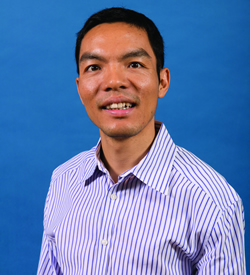
Yongcan Cao
Assistant Professor/Electrical Engineering
Ph.D., Utah State University
Where are you from?
I am originally from China. In 2006, I came
to the United States to pursue my Ph.D.
at Utah State University. Before joining
UTSA, I worked at the Air Force Research
Laboratory, Wright Patterson AFB, OH.
Why did you choose to come to UTSA?
I was very impressed by UTSA’s fast growth
and its enthusiasm to become a Tier One
university.
What are your current research interests?
My current research interests include
autonomous vehicles, cyber-physical
systems, distributed multi-agent systems,
sensor networks, and human-robot
interaction.
What do you hope to accomplish here in COE?
I hope to build a great reputation in the
research area of control, autonomy, and
cyber-physical systems and establish a
strong research program that can help
students succeed in their undergraduate/
graduate studies and be well prepared for
their future careers.
What are your hobbies or interests outside of work?
I enjoy doing anything active such as
running, climbing, and going for bike rides.
I also love traveling and reading.
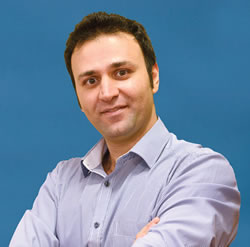
Amir Jafari
Mechanical Engineering
Ph.D. Italian Institute of Technology
Where are you from?
I am originally from the city of Isfahan, located in a central and historic part of Iran.
Why did you choose to come to UTSA?
San Antonio is a fast growing
city and UTSA is a state
research university which I
believe will soon be developed into a Tier One institution.
What are your current research interests?
My current research interests are physical-human-robot-interaction and
exoskeletons. My dream is to see a paralyzed person is again able to walk
using my exoskeleton.
What do you hope to accomplish here in COE?
I hope to develop a research program which is sustainable and provides
outstanding research outcomes to be used for both academia and industry.
What are your hobbies or interests outside of work?
Playing with my son, swimming, and football.
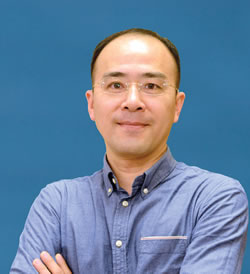
Wonjun Lee
Assistant Professor/Electrical and Computer Engineering
Ph.D., Purdue University
Where are you from?
I am from Seoul, South Korea
Why did you choose to come to UTSA?
UTSA is world famous for security
research. My main research
is in security, especially in
cloud computing. So, I thought
it would be a great fit for me
to collaborate with the prestigious
researchers here at UTSA.
Plus, it is a great environment, and the students are very smart.
What are your current research interests?
"To teach students and to get them engaged in research and then feed that research back into the classroom. I think that academia is a perfect place to combine research and education, especially teaching." My main objective is to increase
security so that users can use freely and safely use their systems.
What do you hope to accomplish here in COE?
I think that academia is a perfect place to combine research and education,
especially teaching. To teach students and to get them engaged in research
and then feed that research back into the classroom. I hope to integrate
research and teaching together in and outside of the classroom.
What are your hobbies or interests outside of work?
I like to play soccer very much. I am interested in playing soccer with students,
and faculty from other departments.
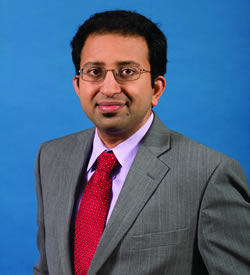
Teja Guda
Assistant Professor/Biomedical Engineering
Ph.D., The University of Texas San Antonio
Where are you from?
I am originally from Bombay (now Mumbai), India. I grew
up in India for the most part, moving between Mumbai,
Kolkata and Chennai (all three cities changed names after
I moved out, a fact I am not responsible for). I completed
my undergraduate education in Mechanical Engineering
from the Indian Institute of Technology, Bombay and then
came to San Antonio to pursue my PhD in Biomedical
Engineering.
Why did you choose to come to UTSA?
I first came to the joint graduate program in biomedical
engineering between UTSA and UTHSCSA (was the
second batch of students admitted into that program) for my doctoral studies, and then left in 2009
for post-doctoral training at Wake Forest University and with the Armed Forces Institute of Regenerative
Medicine. My past collaborations and experience in San Antonio, as well as the overall culture of
growth and scientific excellence, were my primary reasons for returning to the Biomedical Engineering
Department at UTSA as tenure-track faculty. The opportunities to work with the UT Health Science
Center, the US Army Institute of Surgical Research and the Southwest Research Institute are crucial to
establishing my own independent research career and played a significant role in my decision.
What are your current research interests?
I am primarily interested in applied research in regenerative medicine, and in the design and development
of biomedical devices. In the regenerative medicine area, my research focuses on the development
of biomaterials for tissue engineering: such as scaffolds for bone, hydrogels for regenerating skeletal
muscle or the design of grafts for pancreatic transplantation. The primary driver for this research is
to move the basic research that is fairly advanced in the biomaterials field into clinics – whether it is in
the form of technology to print cells into novel materials for “organ printing” or stimulation using bioreactors
to ensure that surgeons can transplant a patient’s own cells after minimal manipulation back
into them to treat massive injuries. There is a central role for engineers to play in this process and it
involves significant overlap or material science, cell biology and physiology, mechanics, and chemistry.
The challenges posed by this complex problem and the potential impact solutions can have on patient
quality-of-life are a continuous inspiration for me
What do you hope to accomplish here in COE?
On the research side, I intend to develop technology for bio-printing tissues and for the stimulation
of the same tissue for regenerative medicine applications. I would like to further explore strategies in
pairing blood vessel and nerve growth within the tissues and organs we currently work on. This involves
not only the physical experiments, but the associated training and more importantly mentoring
students at the graduate and undergraduate levels. The biomedical engineering department at UTSA
has been going through a phase of growth, having added a Masters and then an undergraduate program
over the last few years. I intend to teach the courses in the design curriculum at the undergraduate
level and develop a similar curriculum at the graduate level for our students who intend to pursue
industry careers after their graduate degrees. The two interests overlap in my participation in the
Center for Engineering, Technology and Entrepreneurship on behalf of the COE and partnering with the
College of Business at UTSA to encourage the capstone design students to explore commercialization
avenues for their technology. This involves organization of technology entrepreneurship boot-camps,
finding local business mentors and annual technology-business plan competitions.
What are your hobbies or interests outside of work?
My hobbies outside of work involve traveling to new places and new cuisines whenever I get a chance
– this is usually paired with long road-trips and some hiking trails. I also really enjoy reading, mostly
fantasy fiction (think Lord of the Rings and Game of Thrones). I love to cook to de-stress, but I don’t
know if it would be fair to consider that a hobby!
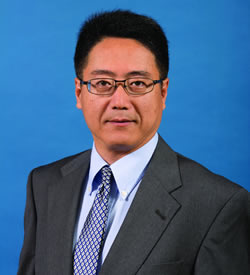
Ruijie Liu
Assistant Professor/Mechanical Engineering
Ph.D., The University of Texas Austin
Where are you from?
I am originally from Tianjin, China. I got my
PhD from The University of Texas at Austin in
Aerospace Engineering and Engineering Mechanics
in 2004. From 2005 to 2012 I worked
as a finite element developer in ANSYS in
Pittsburgh. Before joining UTSA, I worked as
reservoir engineer at BP through 2012-2014.
Why did you choose to come to UTSA?
UTSA has been making a great effort on
becoming a Tier One University. This brings a
unique opportunity for my faculty career. The
fact that San Antonio is in the beautiful Texas
hill country doesn't hurt!
What are your current research interests?
My research is in computational mechanics. My
focuses are on numerical simulation technologies
for hydraulic fracturing for oil and gas
reservoirs and reservoir geomechanics, multiphase
flow at micro-scales, material damage
and failure, coupled multi-physics, and parallel
computing for large and nonlinear problems.
What do you hope to accomplish here in COE?
I will contribute to the effort of UTSA in becoming
a nationally recognized university. To
enhance our engineering students’ ability for
their future careers, I will open new courses
such as fundamentals of petroleum engineering.
I will target a strong research program in
numerical simulation on multi-physics systems
that will help industries to solve their technology
challenges.
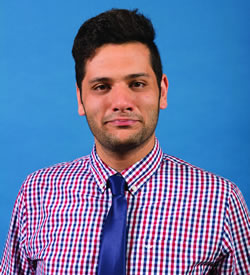
Ahmad Taha
Assistant Professor/Electrical Engineering
ABD, Purdue University
Where are you from?
Although I was born and
raised in Beirut, Lebanon,
I’m originally from
Qalqilya—a small city in
Occupied Palestine. In 2011,
I earned a B.E. in Electrical
and Computer Engineering
(ECE) from the American
University of Beirut. Shortly
afterwards, I moved to
Indiana for a PhD in ECE at
Purdue University. I moved to San Antonio in August 2015, immediately
after graduating from Purdue. I was a research intern at Argonne National
Laboratory, University of Toronto, and MIT’s LIDS.
Why did you choose to come to UTSA?
UTSA’s staggering growth rate, numerous collaboration opportunities,
and quality of research facilities & researchers were the main reasons
behind my decision to come to UTSA. Beyond UTSA’s inevitable future
growth, San Antonio’s unique history, cultural diversity, expansion and
affordability, all drove me to move here.
What are your current research interests?
Do we have a thorough understanding of how infrastructures operate,
behave, and sometimes misbehave? How do humans interact with
machines and large-scale systems? Can we leverage engineering, coding,
and applied mathematics to ameliorate these infrastructures, make
them more resilient, and enhance their security? I am interested in answering
the aforementioned research questions. My ultimate objective is
to understand how complex systems operate and to utilize this knowledge
to create tools, protocols, and control algorithms that would be
leveraged to solve system-level challenges&emdash;related to our basic infrastructures.
Specifically, my research broadly falls into the general areas
of control and optimization of cyber-physical systems, decision-making,
and systems & data sciences.
What do you hope to accomplish here in COE?
am determined to accomplish significant milestones at UTSA’s COE.
First, I want to continue solving research problems that are both abstract
and applied—problems if solved, would ideally improve the quality
of our lives. Second, I plan to build a well-rounded research program/
laboratory that prepares its graduates for industry or academia. Third, I
am resolute in establishing an open-source portal for codes and classes
that I teach. My teaching objective is to leave positive traces on the
lives of young individuals by stimulating their passion for engineering
and physical sciences, while being an engaging mentor. Finally, I plan
to be an active faculty member in the UTSA community through service
and volunteering.
What are your hobbies or interests outside of work?
Beyond my research interests, I am passionate about political philosophy,
social justice & income inequality, and political Islam. I also spend
some of my free time watching and playing soccer, and running.
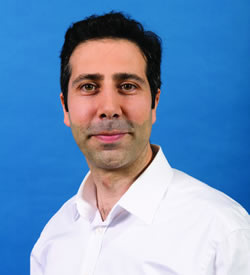
Firat Y. Testik
Associate Professor/Civil & Environmental Engineering
Ph.D., Arizona State University
Where are you from?
I am originally from Turkey and was an associate professor
at Clemson University before joining to UTSA.
At Clemson, I worked in the Glenn Department of Civil
Engineering for the past 9 years.
Why did you choose to come to UTSA?
UTSA is a very prestigious institution with a significant
commitment and progress to become a Tier 1 Research
school. And my research is highly relevant to the state
of Texas. I believe this is an ideal combination for me to
make significant contributions at the local, national, and
international levels.
What are your current research interests?
Very briefly, my expertise is in fluid mechanics and hydraulics.
I apply my expertise to a broad range of research
fields, but mainly to the coastal related and precipitation
related research. Some examples of my research topics
include rainfall measurements (both remote sensing and
in-situ), hydrodynamics around coastal structures (e.g.
breakwaters, levees, bridges, wave energy convertors, wind
turbines), wave mechanics, sediment transport (scour/
erosion, deposition, coastal morphodynamics), and gravity
currents (dredge disposal, oil spills). I am excited in applying
my fluid mechanics expertise in applications that would
cross the departmental and college boundaries.
What do you hope to accomplish here in COE?
I would like to establish a world-renowned research group
supported with a state of the technology experimental and
computational facilities here at UTSA to address various
global research challenges while serving the state and the
nation. As the first step, I am in the process of establishing
a state of the technology hydraulics laboratory.
What are your hobbies or interests outside of work?
I like swimming and hiking to keep me active. I also like
reading non-fictional books and articles in a variety of
different fields.
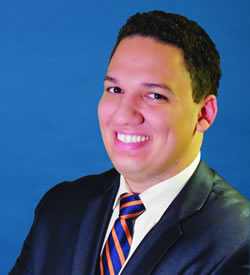
Justin Wilkerson
Assistant Professor/Mechanical Engineering
Ph.D., Johns Hopkins University
Where are you from?
I grew up in Amarillo in the Texas Panhandle, and
pursued my undergraduate studies in Aerospace
Engineering at Texas A&M. I briefly left Texas to obtain
my PhD in Mechanical Engineering from Johns
Hopkins University.
Why did you choose to come to UTSA?
A number of reasons. The opportunity to be closer
to family and friends was a major factor. There’s
also a palpable sense of excitement about being
at an institution that is striving to become a more
research-intensive university. Lastly, San Antonio is
a vibrant metropolitan that offered numerous career
opportunities for my wife, who is also an engineer.
What are your current research interests?
Broadly speaking, I’m interested in why materials
and structures fail from an atomistic and microstructural
stand point. Roughly akin to weather prediction,
my research group makes use of sophisticated
mathematical and computational models to try to
predict the properties of new materials even before
they have been synthesized in the physical world.
This is particularly important when we try to design
novel materials that must safely operate in extreme
environments like nuclear fusion reactors or
next-generation armor systems.
What do you hope to accomplish here in COE?
As a teacher, I hope to play some positive role in
the education and determination of UTSA engineers
to go out and solve some of society’s most pressing
challenges. As a scholar, I hope to help foster
a transition from Edisonian-based to physics-based
discovery of new materials.
What are your hobbies or interests outside of work?
Recently, I’ve picked up playing golf with my father in-law. Neither of us are any good, but it has been
enjoyable none the less. I also still get a thrill out of
watching my alma mater take the field on Saturdays.

